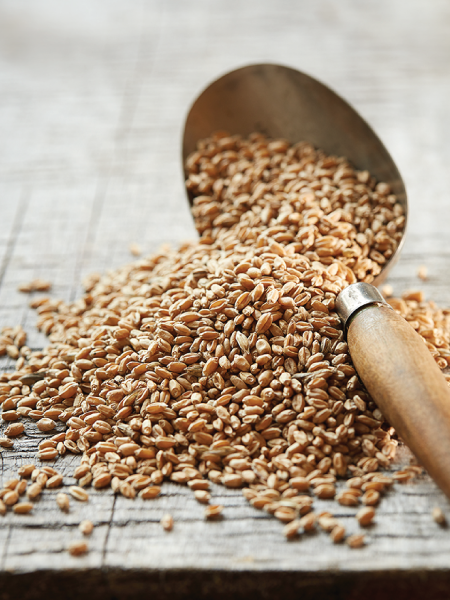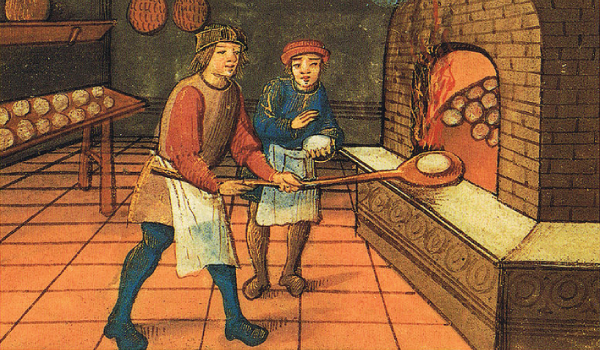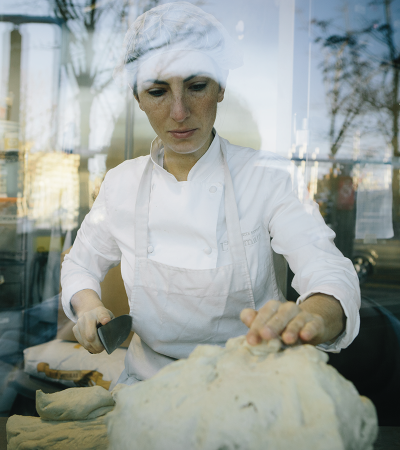Bread has a rich history that reaches back at least 30,000 years. Historically, the first bread was made from roasted cereal grains and water, which was then made into a “grain-paste” that was then cooked. This flatbread still has a legacy in many parts of the world, where similar items are still made today. In Mexico, tortillas are descendants of this flatbread; as is Indian chapatti, naan, and roti; same with Armenian lavishes; and Iranian sangaks and taboons; and Scottish oatcakes; also North American johnnycake. As you can see, flatbread is still prevalent in many varieties across the world.
 Flatbread was a huge part of Sumerian diets, who made a flat cake with barley. It was also eaten as a flatbread known as “ta” in Egypt in the 12th century BC. In ancient Greek, a variety of flatbread was offered as tribute to the gods and consisted of flour, oil, and wine. Speaking of flat bread, A Bread Affair makes a scrumptious Focaccia that is a crowd favourite no matter what the occasion. Aptly named the “Skinny Dipper“, lightly brushed with olive oil and sprinkles of oregano, this flatbread will have you coming back for more.
Flatbread was a huge part of Sumerian diets, who made a flat cake with barley. It was also eaten as a flatbread known as “ta” in Egypt in the 12th century BC. In ancient Greek, a variety of flatbread was offered as tribute to the gods and consisted of flour, oil, and wine. Speaking of flat bread, A Bread Affair makes a scrumptious Focaccia that is a crowd favourite no matter what the occasion. Aptly named the “Skinny Dipper“, lightly brushed with olive oil and sprinkles of oregano, this flatbread will have you coming back for more.
Traces of flour have been linked to the Upper Paleolithic in Europe, which means it was over 30,000 years old. Cereals were a part of a hunter-and-gatherer lifestyle even when the majority of their meals was animal proteins and fats. Cereals and bread were eaten more regularly in the Neolithic period, around 10,000 years ago. Wheat and barley were domesticated quite early on at this time—and it eventually spread from Southeast Asia to Europe, North Africa, and the Indian subcontinent. In other parts of the world, rice, maize, and sorghum may also be used to make bread. The move away from hunting and gathering systems was required as populations grew and needed a more reliable and bountiful food supply.
Traces of yeast found suggest the presence of leavened bread as far back as Ancient Egypt (any dough left to rise will naturally become leavened). Egyptian bread, dense and made from emmer wheat, can be difficult to scan and test. We suspect that leavening extends much farther back into history, as well, but traces become difficult to extract the older they are.
The consumption of bread was absolutely vital to the formation of the earliest human societies—and beyond. As farming more or less replaced hunting, groups of people were forced to settle down and make roots. The need to harvest grains yearly lead to the development of settlements and towns.
Commonly, bread was leavened by taking a chunk of dough day-old with water and sugar in it to use as a “sourdough starter,” of sorts. To make lighter bread, the foam from beer was collected and added to the dough; or, for places that drank wine, a mixture of grape must and flour paste worked in a similar manner.
A free-standing oven with a door and the ability to be pre-heated was a Greek invention, as far as we know. Greeks tended to make barley bread. Baker’s shops were prevalent as early as the 2nd century BC. Many types of bread became available here and in other places in the world: griddle cakes, rolls baked on a spit, honey-and-oil bread, and mushroom-shaped bread with poppy seeds, to name just a few.
 In the Middle Ages, a large loaf of bread was used to set the table and would be used as a “plate” of sorts and saved for after the primary meal. If the host desired, the bread could be eaten, given away to the poor, or fed to the dogs. Eventually wooden trays replaced the bread as a “dish.” Sometimes the bread was adulterated with hazardous materials, like chalk, alum, plaster, sawdust, and ammonium—this continued up until the 20th century.
In the Middle Ages, a large loaf of bread was used to set the table and would be used as a “plate” of sorts and saved for after the primary meal. If the host desired, the bread could be eaten, given away to the poor, or fed to the dogs. Eventually wooden trays replaced the bread as a “dish.” Sometimes the bread was adulterated with hazardous materials, like chalk, alum, plaster, sawdust, and ammonium—this continued up until the 20th century.
Do you know the saying “The best thing since sliced bread”? Well, Otto Frederick Rohwedder is the one who invented a slicing machine for bread—it is his invention to which we still “compare” (sometimes jokingly) our new ideas. Rohwedder invented a machine in 1928 that both sliced and wrapped the bread, so maybe the saying should be “The best thing since sliced and wrapped bread.”
Today, bread is still just as popular as it was back in the day and is a daily staple in many homes. Sadly though, technological advances have allowed bread to become mass-produced to such an extent that it has lost all of its nutrient qualities.
That is what makes A Bread Affair different: we believe in wholesome, artisan, non-gmo bread that is made with our own hands everyday from scratch. The basic ingredients that were popular back in the middle ages are still what we use today: yeast, flour, water and salt. Real bread is making a come back and A Bread Affair is standing in the front lines – join us. Check out our menu or read more about why we are the best organic bread and bakery in Vancouver.

